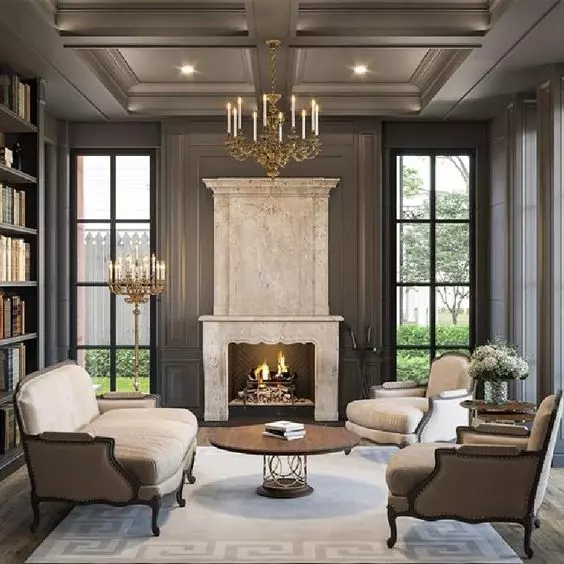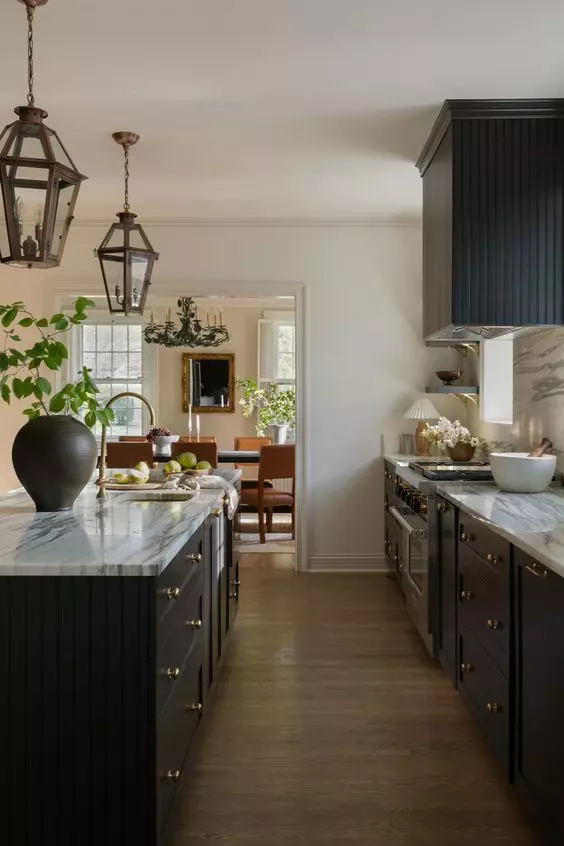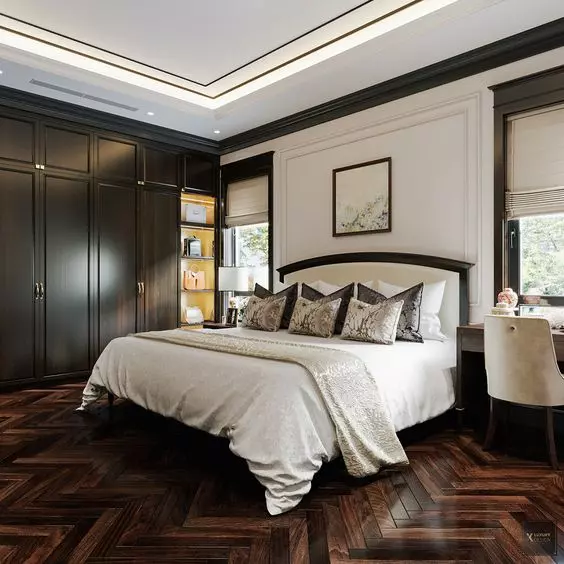Colonial interior design is a captivating style that combines timeless elegance with the rich history of early American settlers. Inspired by their European heritage, these settlers incorporated rustic and practical designs into their new homes. Today, colonial interior design continues to be popular and versatile, offering a classic appeal that can seamlessly be incorporated into modern homes.
Origins of Colonial Interior Design
In the 18th century, colonial style interior design emerged as European settlers brought their design influences to America. They integrated the simplistic lines and features of their European roots with grand elements found in American farmhouses. This unique blend led to a form of interior design that holds a significant place in history.
The origins of colonial interior design can be traced back to the Pilgrim settlers who arrived in North America in the 17th century. These pioneers laid the foundation for colonial architecture and design. British colonial interior design gained popularity, especially in Asia during the colonization era, offering a laid-back and breezy ambiance for relaxation and leisure.
Colonial style decor was originally characterized by its rustic, handcrafted aesthetic, heavily influenced by the settlers' European ancestors. As the design evolved, it began to incorporate a diverse range of cultural influences.
Key Elements of Colonial Interior Design
Architectural Features
 Image Source: Pinterest
Image Source: Pinterest
Architectural features in colonial interior design prioritize formality and symmetry. Square, symmetrical shapes create a sense of balance and proportion. Interiors often have a centrally located entrance, hallway, and staircase, with rooms positioned around them. Painted wood surfaces, paneling, ornate dado, and plaster are commonly used in both the interior and exterior of colonial-style homes.
Furniture
 Image Source: Pinterest
Image Source: Pinterest
Craftsmanship and simplicity are keys to colonial-style furniture. Incorporate well-crafted, thrifted, or new pieces such as sofa tables, end tables, coffee tables, chairs, benches, stools, and sideboards. These furniture pieces should highlight the skill of the maker and showcase natural materials.
Textiles
 Image Source: Pinterest
Image Source: Pinterest
Introduce a mix of light and dark tones in textiles. Use contrast as a significant principle. Light, sheer fabrics work well for window treatments, creating a cool oasis in a tropical setting. Upholstery, cushions, and rugs often feature various textures and patterns with nods to classical influences.
Color Palette
In colonial style interior design, the color palette centers around a contrast of light and dark tones. Soft white paint is commonly used for walls, while deeper, richer colors like mahogany, teak, and ebony appear on furniture pieces. Accents can include pops of color from tropical or exotic influences in textiles and accessories, maintaining a sense of balance and harmony.
Incorporating Colonial Style Into Modern Homes
Modern Colonial Living Rooms
 Image Source: Pinterest
Image Source: Pinterest
To create a modern colonial living room, find a balance between traditional and contemporary elements. Combine classic architectural features such as crown molding and fireplaces with modern furniture that has a minimalist design and clean lines. Incorporate natural materials like wood and wicker to bring warmth and texture to the space. Include at least one key element of modern colonial interior design that ties the room together.
Contemporary Colonial Kitchens
 Image Source: Pinterest
Image Source: Pinterest
When updating a colonial kitchen with a contemporary touch, keep the original cabinetry and woodwork but update the countertops with modern materials such as quartz or granite. Replace old hardware with sleeker, modern options and add a fresh coat of paint to brighten the space. A classic color palette of creams, warm yellows, and muted greens can give the kitchen a timeless feel. Blend modern convenience with traditional elegance by incorporating stainless steel appliances.
Bedrooms With Colonial Touches
 Image Source: Pinterest
Image Source: Pinterest
Create a bedroom with colonial touches by focusing on essential elements like a comfortable bed and soft textiles. Add a canopy or four-poster bed to create a dramatic focal point, complemented by crisp white linens and embroidered accents for a touch of luxury. Traditional patterns work nicely with the colonial style, and layering textures through area rugs, upholstered furniture, and window treatments can create an inviting and restful atmosphere.
Famous Examples of Colonial Interior Design
Colonial-style interior design is experiencing a resurgence in popularity. Some famous examples worth mentioning include the Governor's Palace in Williamsburg, showcasing a classic example of 18th-century colonial design, and the Winterthur Museum and Estate in Delaware, which houses curated collections and breathtaking interiors that represent the finest examples of American colonial design.
Modern examples of colonial interior design can be found in "Colonial Revival" style houses featured in popular home magazines. These homes expertly blend classic colonial elements with contemporary furnishings and color palettes. Key characteristics such as traditional layouts, classic wood furniture, rich color schemes, and decorative elements are often present.
By examining these famous examples, anyone interested in incorporating colonial-style interior design into their own home can gain valuable inspiration and insight into this timeless and elegant style.
Choosing the Right Colonial Style for Your Home
When selecting a colonial style for your home, consider furniture style, flooring type, and color palette that best complement the overall aesthetic. Colonial-style homes focused on practicality and genuine craftsmanship, which should be reflected in your design choices.
Focus on using a soft and muted color palette, incorporating shades that create a sense of authenticity with pops of color for accents. Select furniture pieces that exhibit classic 18th-century elements such as upholstered furniture, crystal chandeliers, and beautifully crafted wooden pieces. Consider hardwood floors or wood options with hand-scraped textures for a charming and historically accurate appearance.
Indoor plants can add warmth and elegance to your colonial-style home. They balance out the muted color scheme and bring a sense of life and vitality to your space.
Don't forget to incorporate classic colonial elements such as wall moldings, wallpapered rooms, and antique accessories. These subtle details create a cohesive and inviting atmosphere reminiscent of the colonial era.
Remember, simplicity, practicality, and craftsmanship are key to achieving the perfect colonial-style interior design. Carefully consider your furniture, flooring, color palette, and decorative accents to create a warm and welcoming home that reflects the timeless beauty of colonial design.
Frequently Asked Questions
If you enjoyed this article about colonial interior design, be sure to follow us on Pinterest so you don't miss any more interior design news!









